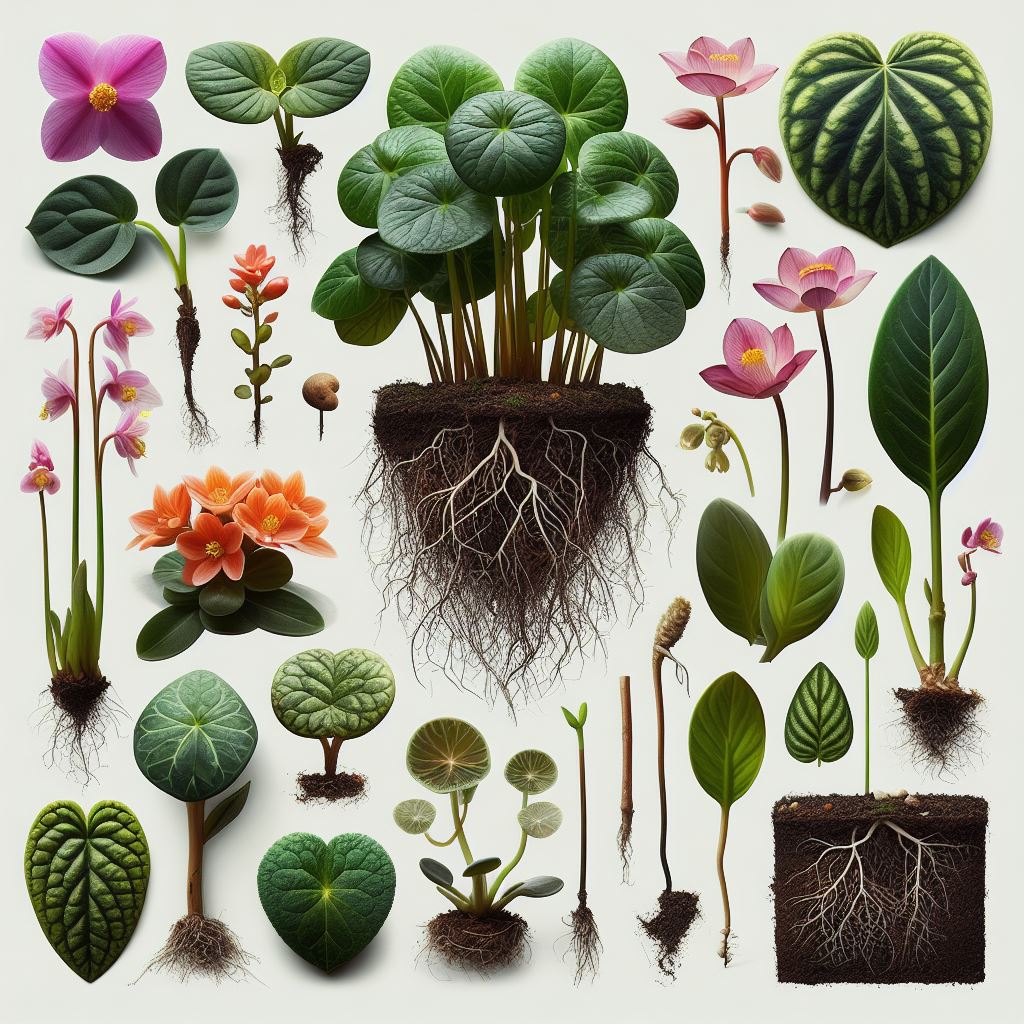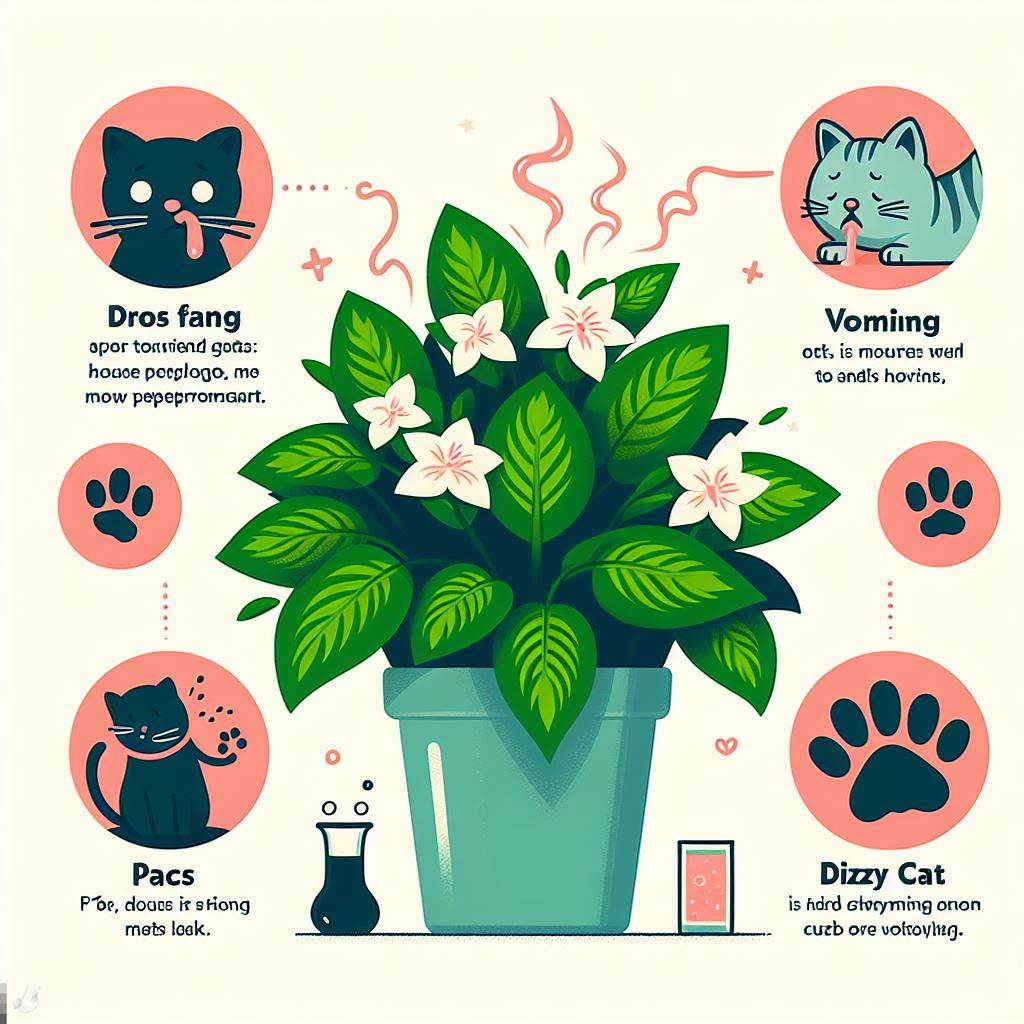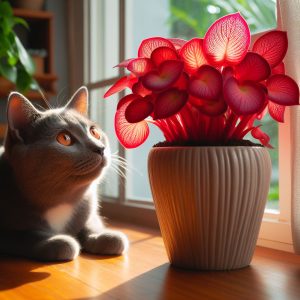Peperomia plants are a popular choice for houseplant enthusiasts thanks to their attractive foliage and easy care requirements. With over 1,000 species, there is a peperomia variety to fit any decor.
However, if you share your home with a curious cat, you may be wondering – is peperomia toxic to cats?
The short answer is yes, peperomia plants are toxic to cats and dogs. But the level of toxicity depends on the species. Some varieties are more dangerous than others if ingested by pets.
By educating yourself on the potential risks, you can make informed choices on which peperomia variety is safest to grow around your furry companions. With some simple precautions, you can also safely keep peperomia in a cat-friendly home.
This comprehensive guide will cover everything you need to know about peperomia toxicity for cats. We’ll explain:
- Which parts of the peperomia plant are poisonous
- The toxic compounds found in peperomia plants
- The symptoms of peperomia poisoning in cats
- Which peperomia varieties are most toxic for cats
- Safety tips for growing peperomia around cats
- What to do if your cat eats a peperomia plant
Armed with this information, you can keep your cat safe while still enjoying the beauty of peperomia houseplants in your home.
Which Parts of Peperomia Plants Are Toxic to Cats?

All parts of the peperomia plant contain toxic compounds that can cause illness in cats if ingested, even in small amounts. This includes the:
- Leaves – The colorful, intriguing foliage is the most tempting part for curious cats. But the leaves contain the highest concentration of toxins.
- Stems – The plant’s stems also contain toxic substances. Chewing on them is dangerous for cats.
- Flowers – Some peperomia varieties produce small spikes of flower buds along an inflorescence. The flowers contain toxins.
- Roots – The peperomia’s roots and tubers underneath the soil absorb and store the plant’s toxic compounds. Exposure to the roots poses a risk to cats who may dig up houseplants.
Cats are most likely to nibble on the leaves or chew on stems they can reach. But ingesting any part of the peperomia plant can potentially cause a toxic reaction. It’s best to keep all components of these plants safely out of paws’ reach.
What Makes Peperomia Toxic to Cats?
Peperomia plants contain harmful alkaloids and other compounds that can trigger toxicity when eaten. The specific toxins that make peperomia poisonous to cats include:
Piperidine Alkaloids
Alkaloids are nitrogen-containing compounds produced as the plant’s chemical defenses against predators. Piperidine alkaloids are found in the Piperaceae plant family, which includes peperomia.
These alkaloids have been associated with cytotoxicity and can disrupt normal cell function and damage liver and kidney tissues in high doses.
Saponins
Peperomia plants also produce saponins – chemical compounds that help defend against insect pests. Saponins cause internal tissue irritation and upset stomach when ingested.
Insoluble Calcium Oxalates
Calcium oxalate crystals are found in most parts of the peperomia plant. When eaten, these needle-like crystals can mechanically damage the tissues of the mouth and digestive tract. In high amounts, it can also prevent the absorption of calcium.
Additional Toxins
Depending on the peperomia species, additional compounds like tannins, atropine, and scolopamine may also be present. All parts of the peperomia plant should be considered toxic to cats.
What Are the Symptoms of Peperomia Poisoning in Cats?

If your cat ingests any part of a peperomia plant, watch closely for these common signs of peperomia poisoning:
- Excessive drooling – The insoluble calcium oxalates and other irritants in peperomia will cause mouth pain and drooling.
- Pawing at the mouth – Discomfort in the mouth may cause your cat to shake their head or paw at their mouth.
- Reddening of the tongue, gums, and lips – Mouth irritation can lead to swelling and redness of the oral tissues.
- Vomiting – One of the earliest signs of peperomia poisoning is repeated vomiting as the toxins irritate the digestive tract. Vomit may be clear, foamy, or yellow-tinged.
- Diarrhea – Frequent loose stools often accompany vomiting as the digestive system tries to flush out the toxins. Diarrhea can lead to dehydration.
- Loss of appetite – Your cat may stop eating normal food due to nausea or mouth pain.
- Lethargy – Poisoned cats often appear listless and fatigued due to dehydration or discomfort.
- Difficulty breathing – In severe cases, swelling of the mouth, throat, and airways can cause breathing issues.
- Tremors or seizures – Neurotoxins like piperidine alkaloids may cause neurological symptoms in high doses.
If you suspect your cat has ingested any part of a peperomia, consult your veterinarian immediately. Treatment within 2 hours of consumption provides the best chance of recovery.
Most Toxic Peperomia Varieties for Cats
While all peperomia species contain some toxins, certain varieties are considered more dangerous than others if eaten by cats. These higher risk types include:
Peperomia Pellucida (Shining Bush Plant)
This species is frequently cited as one of the most toxic peperomia plants for cats and dogs. Also called shining bush plant, it contains a high concentration of piperidine alkaloids that can cause liver damage in pets if sufficient quantities are consumed. Vomiting, drooling, diarrhea, weakness, and tremors may result.
Peperomia Maculosa (Polka Dot Plant)
With its bright pink-and-white foliage, polka dot plant is popular but poisonous. The toxins include insoluble raphides that irritate the mouth and gastrointestinal tract causing excessive drooling and vomiting if ingested by cats.
Peperomia Clusiifolia (Red Edge Peperomia)
The vibrant red edges of this peperomia’s leaves make it eye-catching but risky for curious pets. Its irritant raphides and neurotoxic piperidine alkaloids can lead to vomiting, diarrhea, and central nervous system issues if enough plant matter is consumed. Keep it out of paws’ reach.
Peperomia Caperata (Emerald Ripple Peperomia)
Sometimes called the emerald ripple peperomia, its crinkled leaves contain irritant compounds. The toxic principles in this species primarily cause gastrointestinal signs like vomiting and diarrhea but may become life-threatening if a large amount is eaten.
Peperomia Graveolens (Pepper Face)
This unique peperomia has peppercorn-like flower spikes. Along with mouth and stomach irritation if ingested by cats, Pepper Face peperomia contains piperidine neurotoxins that could cause neurological symptoms like tremors in high doses. It’s best kept away from pets.
While less toxic than the above varieties, it’s still wise to keep all peperomia plants out of reach of curious cats who may nibble on the leaves or stems. Prevent access to prevent poisoning.
5 Safety Tips for Growing Peperomia Around Cats
If you want to keep peperomia plants in your cat-friendly home, here are some important safety precautions to follow:
1. Choose Less Toxic Varieties
Opt for peperomia species that are lower risk for cats like Peperomia obtusifolia (baby rubber plant), Peperomia argyreia (watermelon peperomia), or Peperomia caperata. While they aren’t completely non-toxic, they contain lower levels of harmful compounds.
2. Keep Out of Reach
Place peperomia plants somewhere your cat can’t access them. Keep them on high shelves or windowsills safely away from where curious cats jump and climb. Never put peperomia plants on low tables or floors.
3. Use Pet Deterrents
Consider using deterrents like Ssscat automated sprayers or Scoot mats around peperomia plants. These punish unwanted chewing behaviors and teach cats to avoid those areas through safe but surprising bursts of air, scent, or texture.
4. Redirect Chewing
Provide plenty of enticing cat-safe alternatives for chewing like catnip toys. This helps redirect your cat’s natural nibbling instinct away from toxic plants onto appropriate objects.
5. Monitor Interactions
Even using deterrents and redirection, some determined cats may still try tasting peperomia plants. So always monitor your pet’s interactions with any indoor houseplants and remove the plant immediately if they attempt any nibbling. Prevention is key.
Taking these precautions allows you to enjoy growing peperomia safely in your cat-inhabited home. But diligence is required to keep these toxic plants away from curious cats.
What to Do if Your Cat Eats a Peperomia Plant
Accidents happen. If you catch your cat chomping on a peperomia or suspect they’ve ingested any part of the plant, quick action is vital:
Remove the Plant Immediately
If you catch your cat in the act of chewing on peperomia, get the plant away from them right away. This will prevent them from ingesting even more of the toxic plant.
Check Their Mouth
Gently inspect the inside of their mouth. Look for any pieces of the plant caught in the gums, cheeks, teeth, and tongue and remove them carefully.
Induce Vomiting If Swallowed Recently
If it’s been within the last 2 hours, consult your vet about inducing vomiting to expel the stomach contents before toxins are absorbed. Vomiting can remove toxins before they’re digested.
Call Your Vet or the Pet Poison Helpline
Phone your veterinarian for advice immediately or contact the ASPCA Pet Poison Helpline at (888) 426-4435. They can help assess exposure and recommend treatment options. Don’t wait for symptoms if ingestion is suspected.
Get Veterinary Care Right Away
Take your cat to the vet clinic as soon as possible after the incident. They can provide tailored emergency care based on the details of exposure and your pet’s symptoms. Rapid decontamination and treatment are critical.
With prompt veterinary treatment, the prognosis is often good for peperomia poisoning. But delaying vet care after exposure allows toxins to be absorbed, raising the risk of serious complications. So always act fast if you think your cat has eaten any part of a peperomia plant. Prevention is best, but rapid response after accidents is crucial for the best outcome.
Conclusion: Growing Peperomia Safely Around Cats is Possible with Care
Peperomia plants do contain toxins that make them potentially harmful if ingested by cats. However, by choosing less risky varieties, keeping plants securely out of reach, using deterrents, and always monitoring interactions, you can successfully grow peperomia in a cat-friendly home.
Take steps to pet-proof your peperomia plants, especially high-risk types like P. pellucida, P. maculosa, and P. clusiifolia. Avoid exposing cats to any parts of the plants and their roots. With proper precautions, early detection, and prompt veterinary care if needed, peperomia plants can add beauty to your home without endangering your feline companions.
Just be vigilant and educate yourself on the risks. Understanding peperomia’s toxicity for cats allows you to take appropriate measures to keep your pets safe. Be sure to keep all houseplants and flower arrangements out of reach of curious cats who may be tempted to nibble.
Following the responsible pet owner’s motto of ‘better safe than sorry’ is wise when growing any potentially toxic plants like peperomia around pets. With some common-sense precautions, both you and your cats can enjoy the attractiveness of peperomia safely and happily in a shared home.




